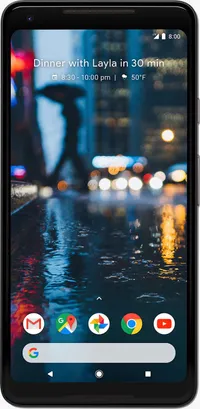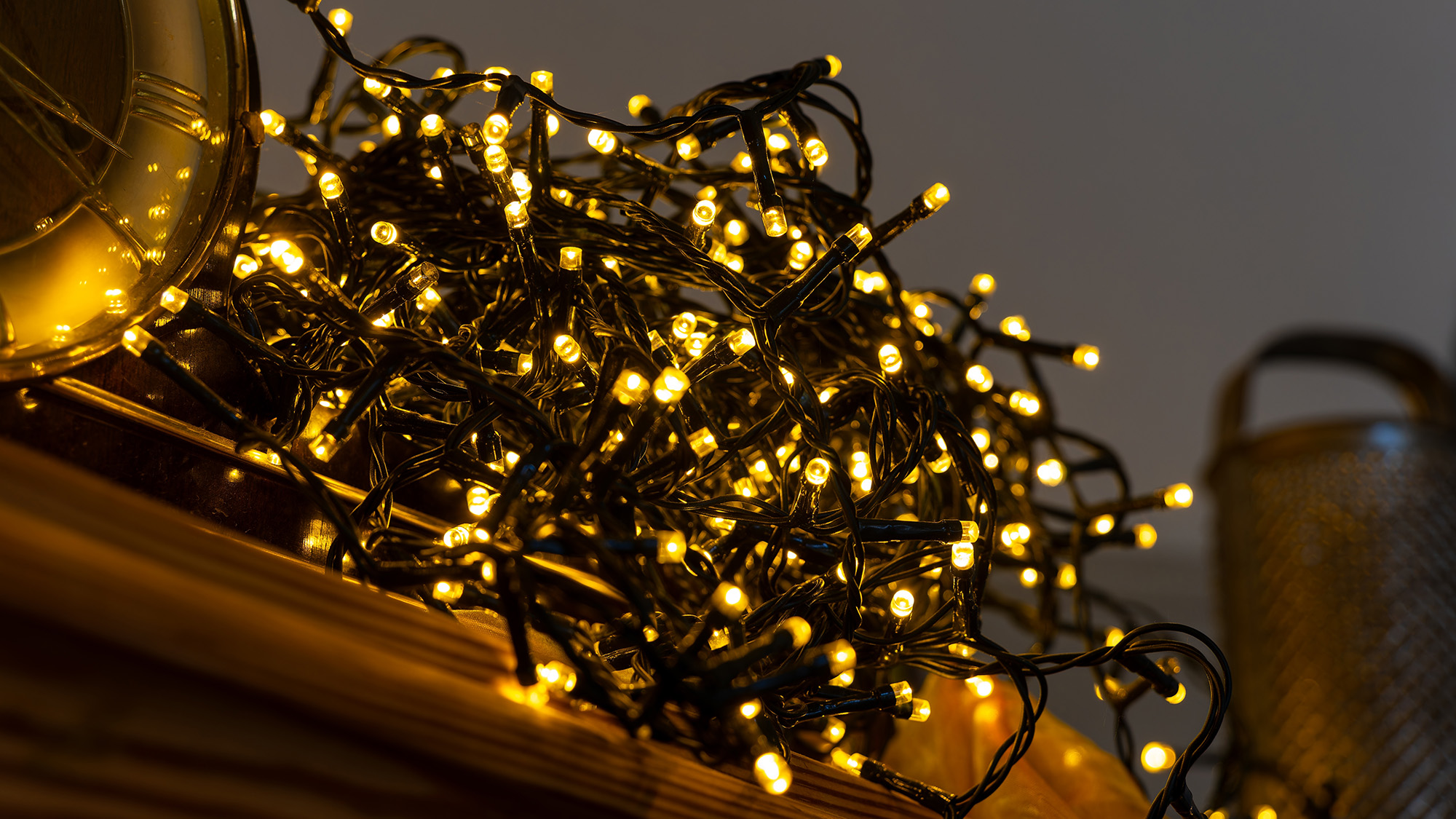Pixel 2 XL vs. Galaxy Note 8: A Photo Finish
We put the Pixel 2 XL and Galaxy Note head to head to find out which Android heavyweight better justifies its steep price tag.
The world of big-screen Android heavyweights boils down to two major players. But which one reigns supreme?
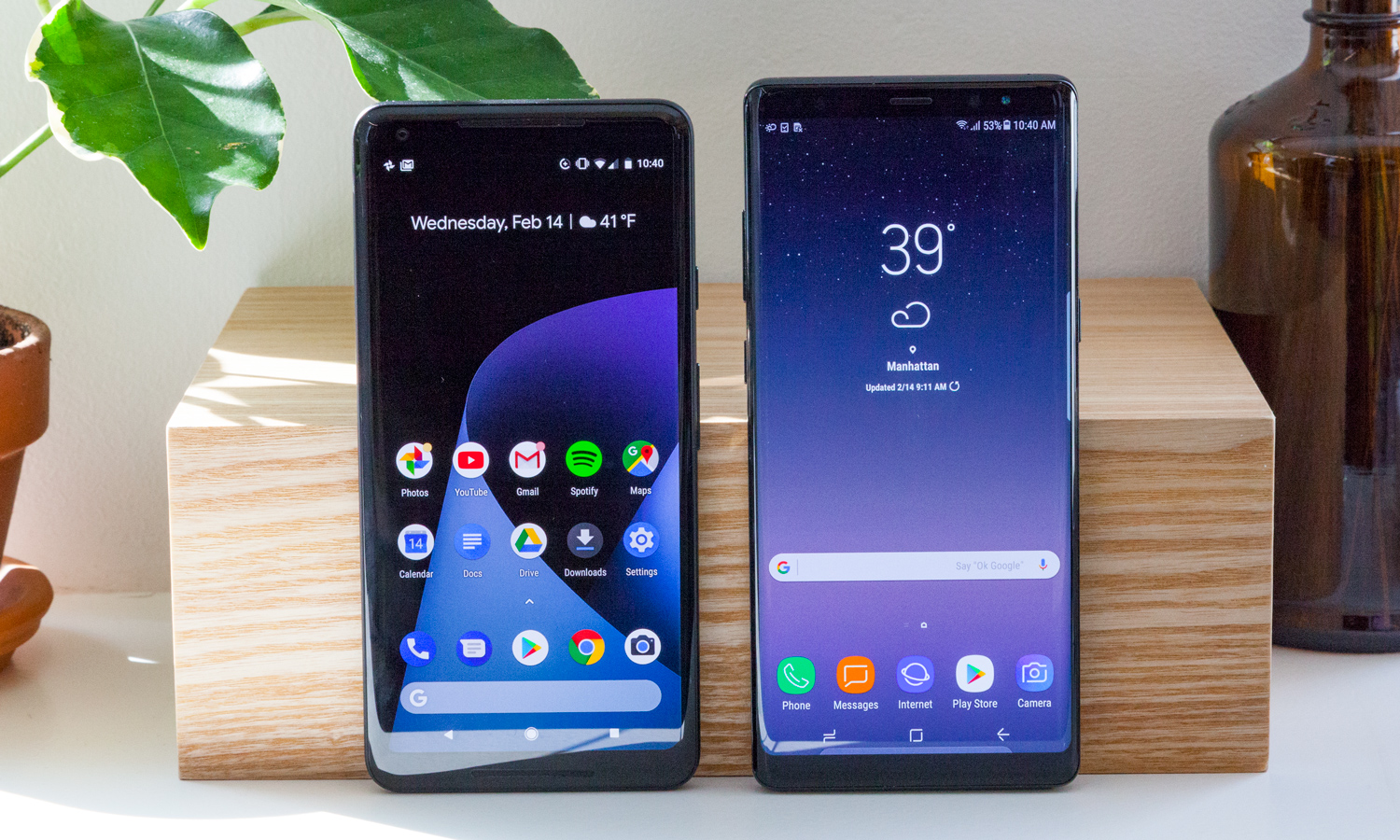
In one corner, you've got Google's Pixel 2 XL. Armed with an array of AI-powered features, the latest version of Android and one of the best cameras we've encountered in any smartphone to date, the Pixel 2 XL marries quality hardware and innovative software in a way that most phones running Google's mobile OS simply don't.
On the other end of the ring, there's Samsung’s Galaxy Note 8. It may be powered by the same Snapdragon 835 processor found in Google's flagship, but the Note 8 differs in several key ways. Samsung's phone sports two cameras, where you'd find only one on the Pixel. As of this writing, the Note 8 still hasn't been upgraded to Android Oreo, but Samsung's phone does come equipped with a nifty stylus and loads of additional conveniences that stock Android doesn't offer. And at 6.3 inches, Samsung's phablet is noticeably larger than the 6-inch Pixel 2 XL.
No matter which phone you opt for, you'll spend a significant chunk of change — especially on the Note 8, which costs $950 compared to the Pixel 2 XL's $849. Is Samsung's phone worth the extra dough? We put the two devices head to head to find out.
Specs
| Google Pixel 2 XL | Samsung Galaxy Note 8 | |
| Price | $849/$949 | $950 |
| OS | Android 8.1. Oreo | Android 7.1.1 Nougat with Samsung Experience 8.5 |
| Screen Size (Resolution) | 6 inches, 2880 x 1440, P-OLED | 6.3 inches, 2960 x 1440, AMOLED |
| CPU | Qualcomm Snapdragon 835 | Qualcomm Snapdragon 835 |
| RAM | 4GB | 6GB |
| Storage | 64GB/128GB | 64GB |
| microSD Slot | No | Yes, up to 256GB |
| Rear Camera | 12.2 MP (f/1.8) with OIS | Main 12 MP (f/1.7) with OIS; secondary 12 MP (f/2.4) telephoto with OIS |
| Front Camera | 8 MP (f/2.4) | 8 MP (f/1.7) |
| Battery Life (Hrs:Mins) | 12:09 | 11:11 |
| Water Resistance | IP67 | IP68 |
| Size | 6.22 x 3.02 x 0.31 inches | 6.40 x 2.94 x 0.34 inches |
| Weight | 6.17 ounces | 6.88 ounces |
Design
Despite their large screens, neither the Note 8 nor the Pixel 2 XL is unwieldy to use with one hand or to stash in a pocket. That's because both employ extra-wide 18:9 screens with slim bezels all around.

On the Galaxy Note 8, bezels are almost nonexistent along the left and right edges, thanks to Samsung's Infinity Display tech. This makes one-handed operation a little easier, though the Pixel 2 XL is also compact for a phone of this size.
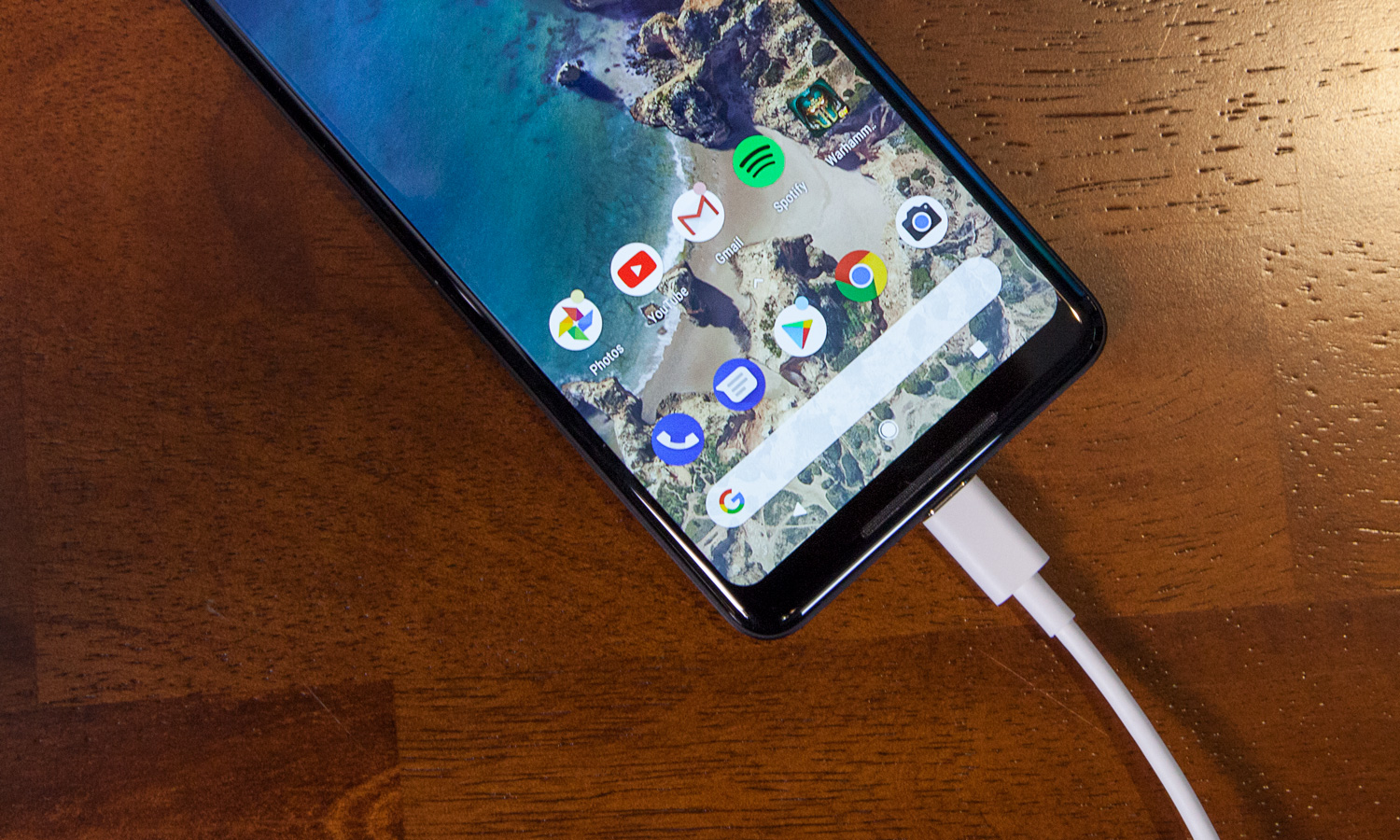
Around the back, these phones couldn't look or feel more different. The Note 8 employs a metal frame with a glass panel to enable wireless charging. It's very sleek and carries the right amount of heft, which always seems to be missing from phones built from glass all around. But the glass panel can make the phone quite slippery.
Get instant access to breaking news, the hottest reviews, great deals and helpful tips.
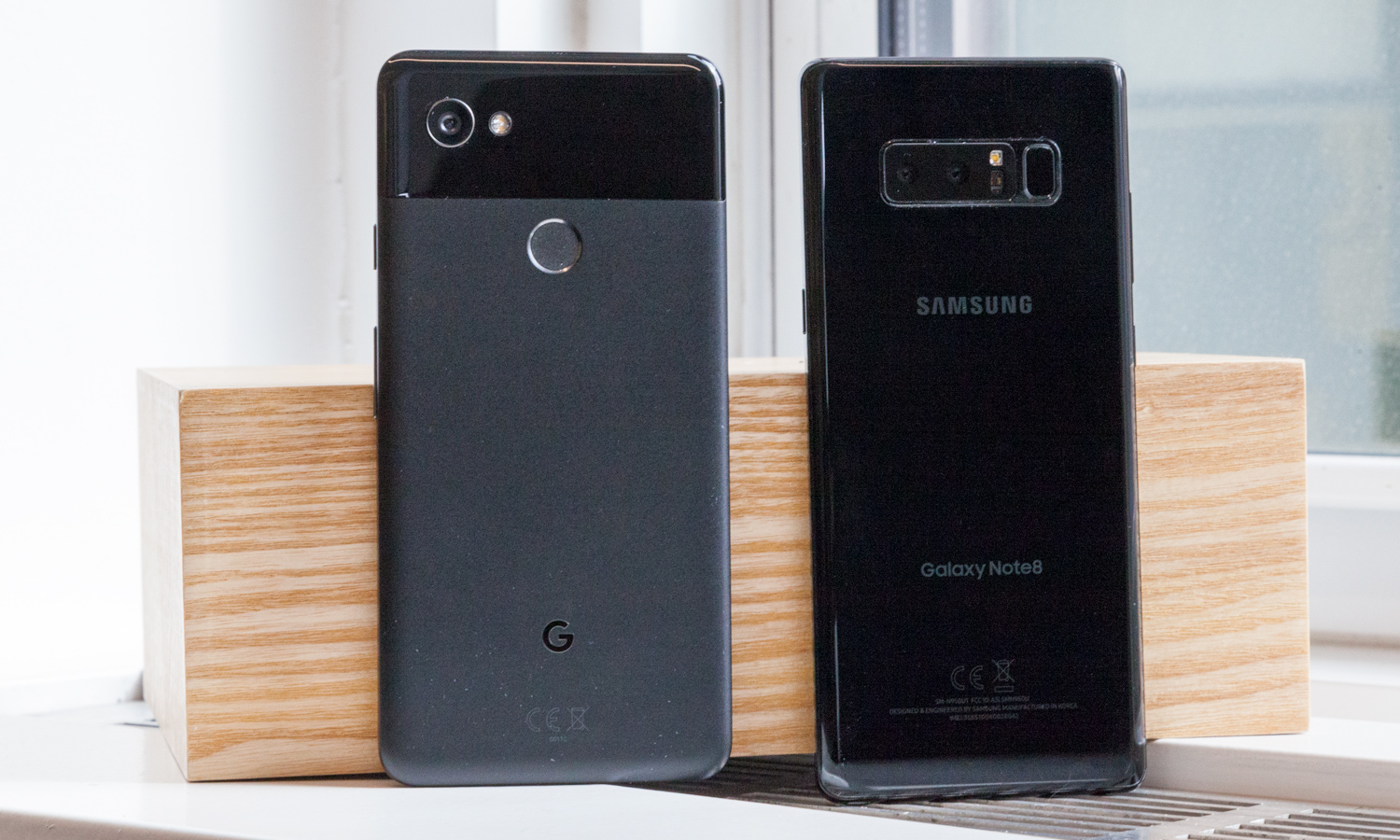
By contrast, the powder-coated finish on the Pixel 2 XL's aluminum body is a stroke of genius that feels unlike anything else on the market. If you prefer a matte texture, you'll probably love the Pixel 2 XL's feel. We wish other phone makers were as creative with the materials they select for their products. However, again, Samsung's dependency on glass has a lot to do with wireless charging, a feature the Pixel 2 XL does not support.
The lone gripe I have with the Note 8's design is the placement of its fingerprint sensor, which sits in a awkward spot to the right of the dual rear cameras. It's an ergonomically unfriendly choice that resulted in us smudging the lenses on our unit nearly every time we went to unlock the phone.

The Pixel 2 XL's more traditional arrangement, with the scanner mounted centrally about a quarter of the way down the back of the phone, is much better. However, the absence of a headphone jack on Google's flagship is even more frustrating, and so Samsung gets the nod here.
Winner: Galaxy Note 8
Display
The Galaxy Note 8's 6.3-inch Super AMOLED display is a benchmark in the flagship segment, thanks to the breadth of its color gamut and a peak brightness that's impressive for an OLED panel. The Note 8 also offers a range of display modes between more saturated and more realistic, so users can find a screen setting that suits them.
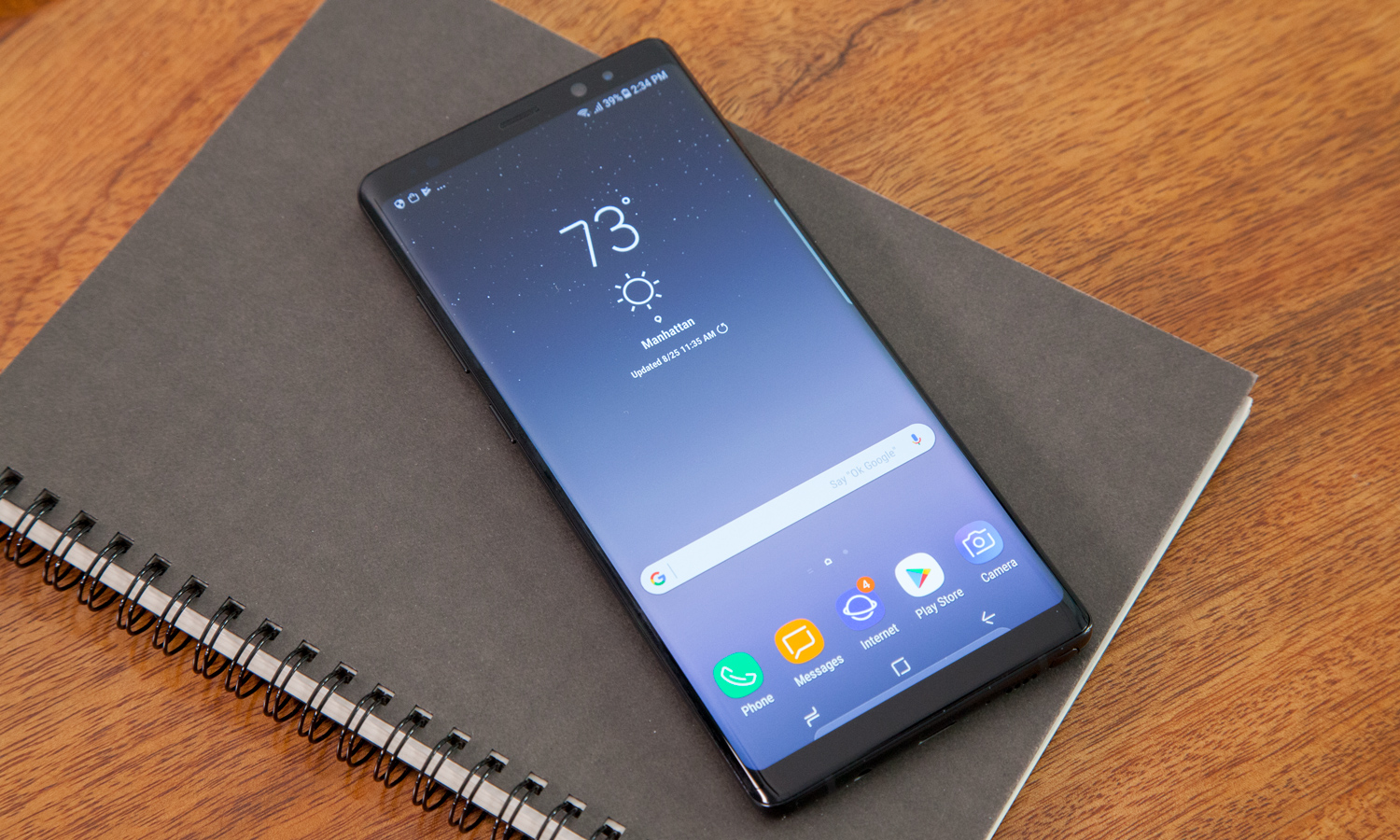
The Pixel 2 XL's screen, meanwhile, has proven to be the weakest aspect of Google's flagship. With a resolution of 2880 x 1440, it's just about as sharp as the Note 8's 2960 x 1440 panel. But it exhibits poorer viewing angles, a papery appearance when displaying solid colors and a default sRGB mode that's a little more muted than what you get from other devices. Taking a look at our home page on both handsets set to similar color profiles, Google's phone exhibited a slightly yellow tint that seemed unnatural next to the Note 8's screen.
Additionally, many Pixel users reported problems with burn-in and splotchy blacks after the phone launched. Although Google issued a round of updates to address some of these issues, even when the display operates as intended, it still doesn't measure up to the Note 8's.
Winner: Galaxy Note 8
Performance
Although the Pixel 2 XL and Galaxy Note 8 are powered by the same Qualcomm chipset, the Note 8 has an edge in that it comes equipped with 6GB of RAM, versus 4GB in the Pixel 2.
This means that the Note 8 can switch apps a little more quickly, especially those that have already been opened and are stashed in the phone's memory. But as the Pixel 2 is already a very fast phone, you'd be unlikely to notice any serious difference in everyday usage.
| Google Pixel 2 XL | Samsung Galaxy Note 8 | |
| Geekbench 4 | 6,282 | 6,564 |
| 3DMark Sling Shot Extreme | 3,606 | 3,748 |
| Adobe Premiere Clip Transcoding (Sec:Min) | 2:55 | 3:03 |
Nevertheless, the benchmarks reflected the Note 8's slight hardware advantage. In 3DMark's Sling Shot Extreme, a graphics test designed for high-end devices, the Pixel 2 XL finished with a score of 3,606, just behind the Note 8's 3,748. Geekbench 4, another benchmark that analyzes overall performance, produced similar results, with the Note 8 out in front at 6,564. The Pixel 2 XL wasn't far back, at 6,282.
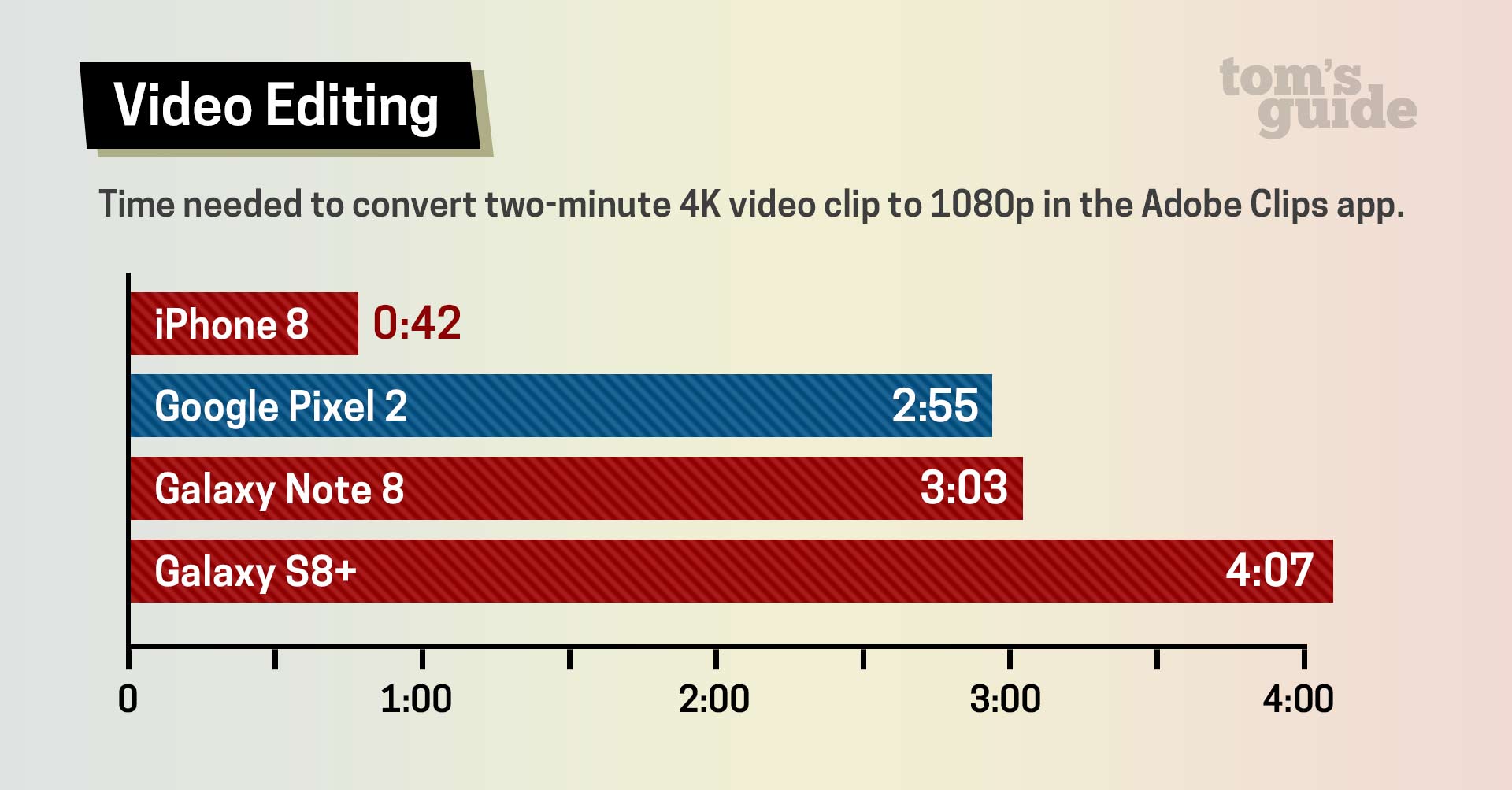
Finally, in one of our real-world tests, we timed how long it took both phones to transcode a 4K video clip to 1080p via the Adobe Premiere Clip app. The results here were a bit of a surprise, as Google was able to turn the tables on Samsung and come out in front, posting a time of 2 minutes and 55 seconds, compared to 3 minutes and 3 seconds for the Note 8.
Winner: Galaxy Note 8
Camera
The Pixel 2 XL may seem underequipped, with its single rear 12.2-megapixel f/1.8 camera, but thanks to Google's computation-driven smart-imaging tech, the phone can still produce shallow depth-of-field portraits like what you get from the Note 8's Live Focus mode and dual 12-megapixel lenses. Both phones feature optical image stabilization for smoother shots in motion, as well.

I ventured out into Bryant Park on a dreary February morning to compare the devices, and the Pixel 2 XL once again staked its claim as one of the finest phones for photography, just as it did against the equally capable iPhone X. The Pixel's shot just pops here, with fantastic color and contrast, as well as highlights and shadows that are pronounced, but not so pronounced as to blow out detail in the frame.
The Note 8's shot is fine by comparison, but just a little too blurry — especially when you zoom in on the text on the umbrella and the texture of the ground.
Next, I headed indoors to capture this challenging low-light scene. The Note 8 did a slightly better job of exposing the objects in the foreground but couldn't resolve the intense highlights in the sky. Overall, the Pixel 2 XL's more-balanced shot and accurate white balance helped it squeak out another win here, thanks in part to Google's excellent HDR+ mode and dedicated Pixel Visual Core image-processing chip.
To see how the phones' portrait skills matched up, I snapped a couple shots of my colleague Shaun. The Pixel's ability to capture fine detail really shines here, although Google's single-lens depth system runs into some trouble distinguishing between the foreground and background, as evidenced on the side of Shaun's head, just above his left ear.
The Note 8 does a better job in that regard, but the overall result is too bright and smooths over too much — something we've observed many times when shooting portraits with Samsung's phone.
Finally, I snagged a few selfies and found that the results reflect those of the previous comparison, even though I was using the phones' front-facing cameras this time. The two devices both make use of 8-MP sensors, but produced very different results. The Pixel 2 XL's rendition was darker (not surprising, given its smaller f/2.4 aperture compared to the Note's f/1.7) but much sharper and punchier, while the Note 8's attempt once again had a slight waxiness. It should also be mentioned that because Google's portrait mode works with just one lens, you can also take shallow depth-of-field selfies.
No matter which phone you take on your next photography trip, the camera will be equipped with AI software that can identify objects and call up relevant results. The Note 8 uses Bixby Vision, while the Pixel 2 XL employs Google Lens. They're generally hit or miss, though Bixby allows you to drill down and specify the context of the object you want to know more about — for shopping purposes, text extraction or if you're just on the hunt for similar images.
Winner: Pixel 2 XL
Software and Special Features
If having the latest version of Android is important to you, the Pixel 2 XL is the winner here. Google's devices are always the first to receive updates, and both the original Pixel and Pixel 2 devices currently run Android 8.1 Oreo, the latest version of the mobile OS.
That means Pixel 2 XL users get notification dots, which operate similarly to badges in iOS, as well as alerts about battery-hogging apps, interface tweaks, picture-in-picture and limits to prevent rogue apps from using up your phone's resources while running in the background. Google has also confirmed that, beginning with the Pixel 2 and 2 XL, all its phones will be supported with software updates for three years — an improvement over the previous two-year policy, which Samsung also employs.
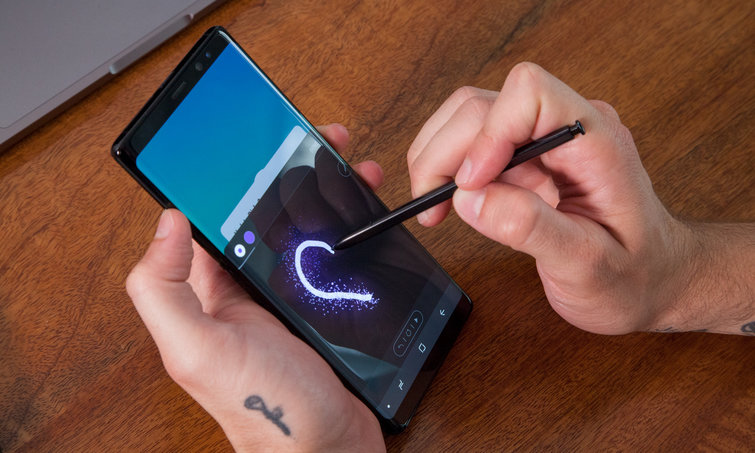
The Galaxy Note 8 doesn't yet have Android 8.1 Oreo, or even 8.0. Despite being the best-selling Android phone maker, Samsung doesn't have the best track record for timely updates. The Note 8 still runs 7.1 Nougat, though betas for 8.0 have been in circulation for weeks. That said, even the Note 8's re-skin of Nougat offers features that Pixel 2 XL doesn't, and that's mostly down to Samsung's S Pen. The stylus can be used to highlight and translate text anywhere on the device, create GIFs, send animated Live Messages, and take notes even while the screen is off.
Aside from the S Pen, the Note 8 also features Samsung's Edge Panel, which houses customizable shortcuts accessible with a swipe in from a side of the screen. The Pixel 2 XL offers a shortcut of its own thanks to Google's Active Edge technology, which lets you squeeze the lower frame of the phone to access Google Assistant.
MORE: Best Smartphones on the Market Now
Finally, the Note 8 supports an exclusive accessory called the DeX Station that can transform the phablet into a makeshift desktop computer. It's not cheap — you'll have to spend an additional $149 on top of the price of the handset — but it does offer an interface that Google's flagship doesn't, which could be ideal for users who frequently work on their phones.
Although Samsung can't match Google's timely Android updates or three years of support, the S Pen adds features that even the Pixel 2 XL can't match — meaning this one ends in a wash.
Winner: Tie
Battery Life
The Pixel 2 XL and Galaxy Note 8 have similarly sized batteries. Google has packed its phone with a 3,520-mAh battery, which is bigger than what you find in most flagships, while Samsung opted for a more conservative, 3,300-mAh pack.
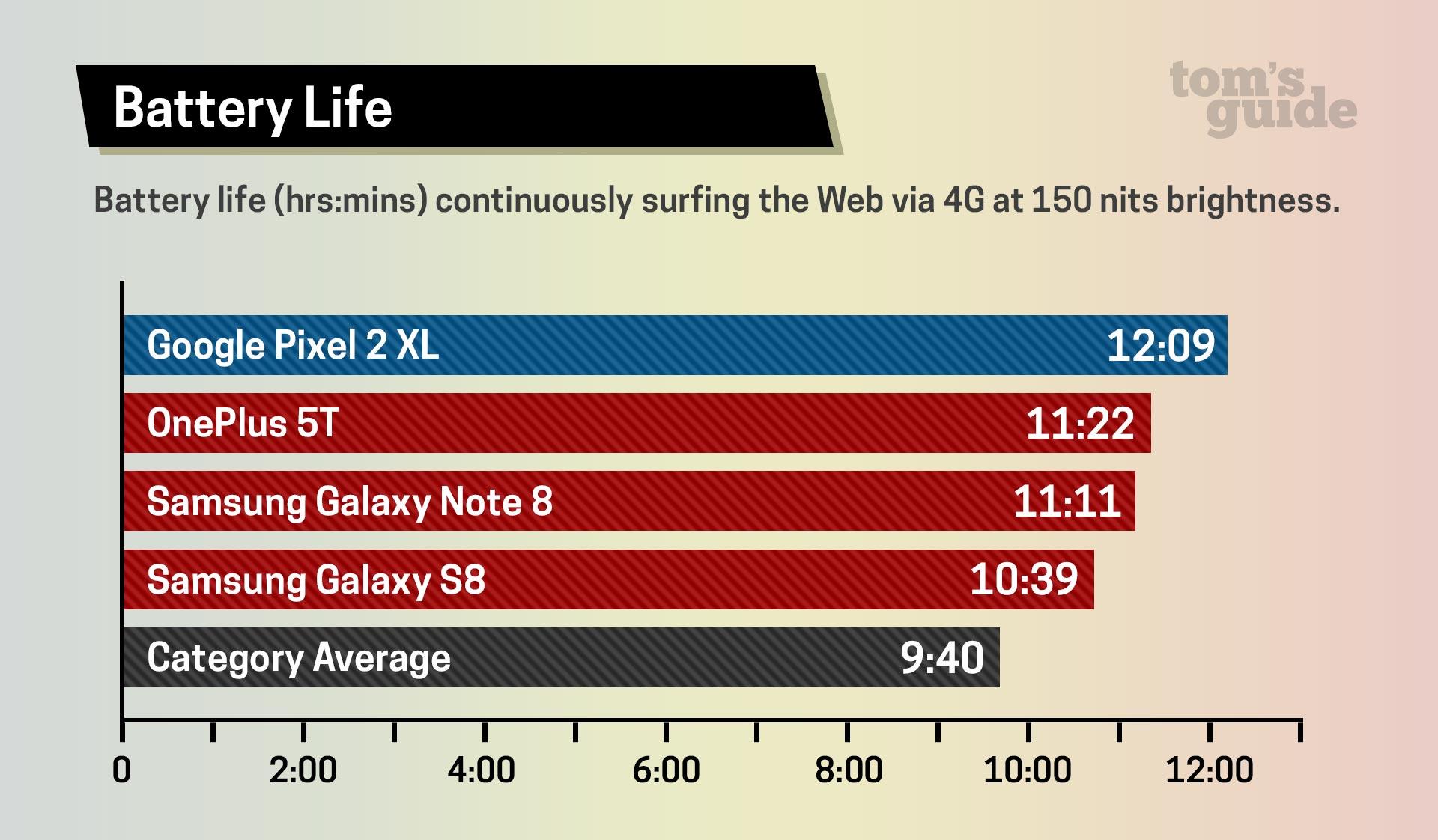
Not surprisingly, the Pixel used its larger capacity to stretch its longevity about an hour past the Note 8 on a single charge. Where Samsung's device called it quits at 11 hours and 11 minutes, Google's phone lasted for 12 hours and 9 minutes before needing a refill.
As it turns out, the two phones take about the same time to charge with their included adapters. In 30 minutes, the Pixel 2 XL reached 38 percent from empty, while the Note 8 hit 35 percent. After an hour, they were nearly even: The Pixel was exactly three-quarters full, and the Note 8 was at 74 percent.
MORE: Smartphones with the Longest Battery Life
Although the Note 8 won't last quite as long through the day, it has one advantage in that it supports Qi and PMA wireless charging. However, don't expect Samsung's phone to charge quite as quickly when using this method, as wireless charging is less efficient than a wired connection.
Winner: Pixel 2 XL
Pricing and Availability
At $849 and $950, respectively, the Pixel 2 XL and Galaxy Note 8 are among the most expensive Android phones out there. Both devices are available through a network or unlocked; however, Verizon is the exclusive carrier partner for the Pixel. That means T-Mobile, AT&T and Sprint customers will have to buy Google's handset unlocked and then take it to one of those networks for service.
Alternatively, you can take advantage of the fact that all the Pixel phones are compatible with Google's Project Fi network. This network takes a pay-as-you-go approach and reimburses customers for the data they don't use every month.
The Note 8 is more convenient to buy, as it is sold through all four major U.S. carriers. Samsung currently offers a free pair of AKG Bluetooth headphones with the purchase of a Note 8 through the Samsung site. Additionally, both companies allow you to trade in a qualifying device for credit, which could help lower the price by a few hundred dollars.
MORE: Best Smartphones on the Market Now
While it's a bit easier to purchase a Note 8 straight from your wireless provider, the Pixel 2 XL is still compatible with all networks, and its lower price earns it the victory in this category.
Winner: Pixel 2 XL
Overall Winner
Neither the Pixel 2 XL nor the Galaxy Note 8 is perfect, but each is pretty close to being the ideal Android device. In fact, these phones are so strong that Google’s victory came down to a difference of only a single point.
| Google Pixel 2 XL | Samsung Galaxy Note 8 | |
| Design (10) | 8 | 9 |
| Display (15) | 11 | 14 |
| Performance (10) | 8 | 9 |
| Cameras (20) | 18 | 16 |
| Software and Features (10) | 9 | 9 |
| Battery and Charging (20) | 17 | 15 |
| Pricing and Availability (15) | 11 | 9 |
| Overall (100) | 82 | 81 |
The Note 8 is an exceptionally well-rounded phone, offering a sleeker design, a better OLED display and slightly better performance than the Pixel 2 XL. But where the Samsung phone fell short, it did so noticeably. The Pixel 2 XL's superior camera and battery life, support for the latest version of Android, and cheaper price help it win out in the end.
Credit: Tom's Guide
Adam Ismail is a staff writer at Jalopnik and previously worked on Tom's Guide covering smartphones, car tech and gaming. His love for all things mobile began with the original Motorola Droid; since then he’s owned a variety of Android and iOS-powered handsets, refusing to stay loyal to one platform. His work has also appeared on Digital Trends and GTPlanet. When he’s not fiddling with the latest devices, he’s at an indie pop show, recording a podcast or playing Sega Dreamcast.
-
DR____L The Note 8 is running 7.1.1. So is my four model year old Nexus 6. I'm knocking the vast majority of Android makers (not just Samsung) and their lack of updates. After two and a half years they kick you to the curb with no more updates, OS or security. That's planned obsolescence .Reply -
sac_khan What about issues pixel and pixel XL had since launch pixel XL had display issue, pixel and pixel XL both having heating and battery drain issue after February update; please include also these user issues when you are deeply reviewing any device.Reply
